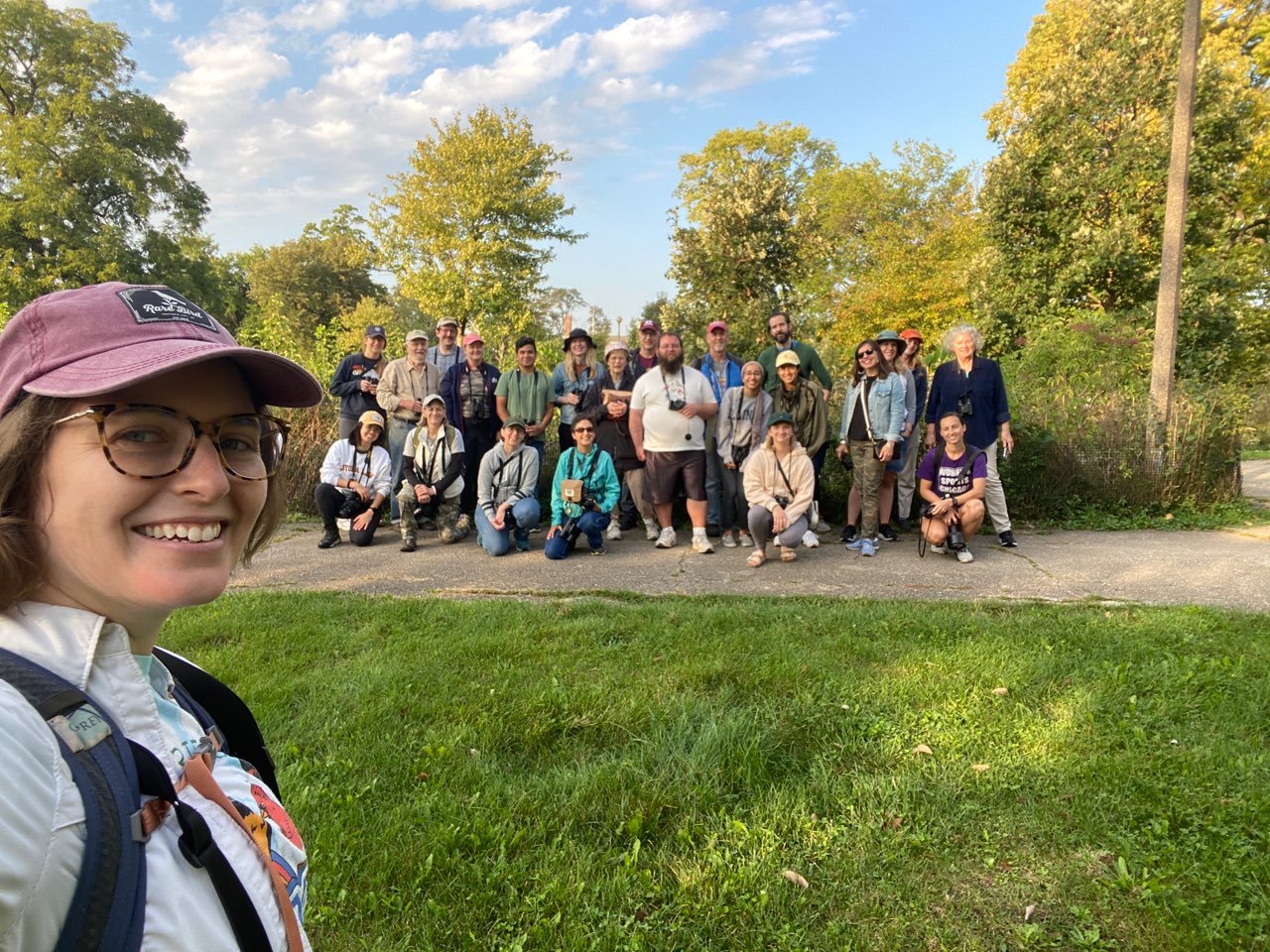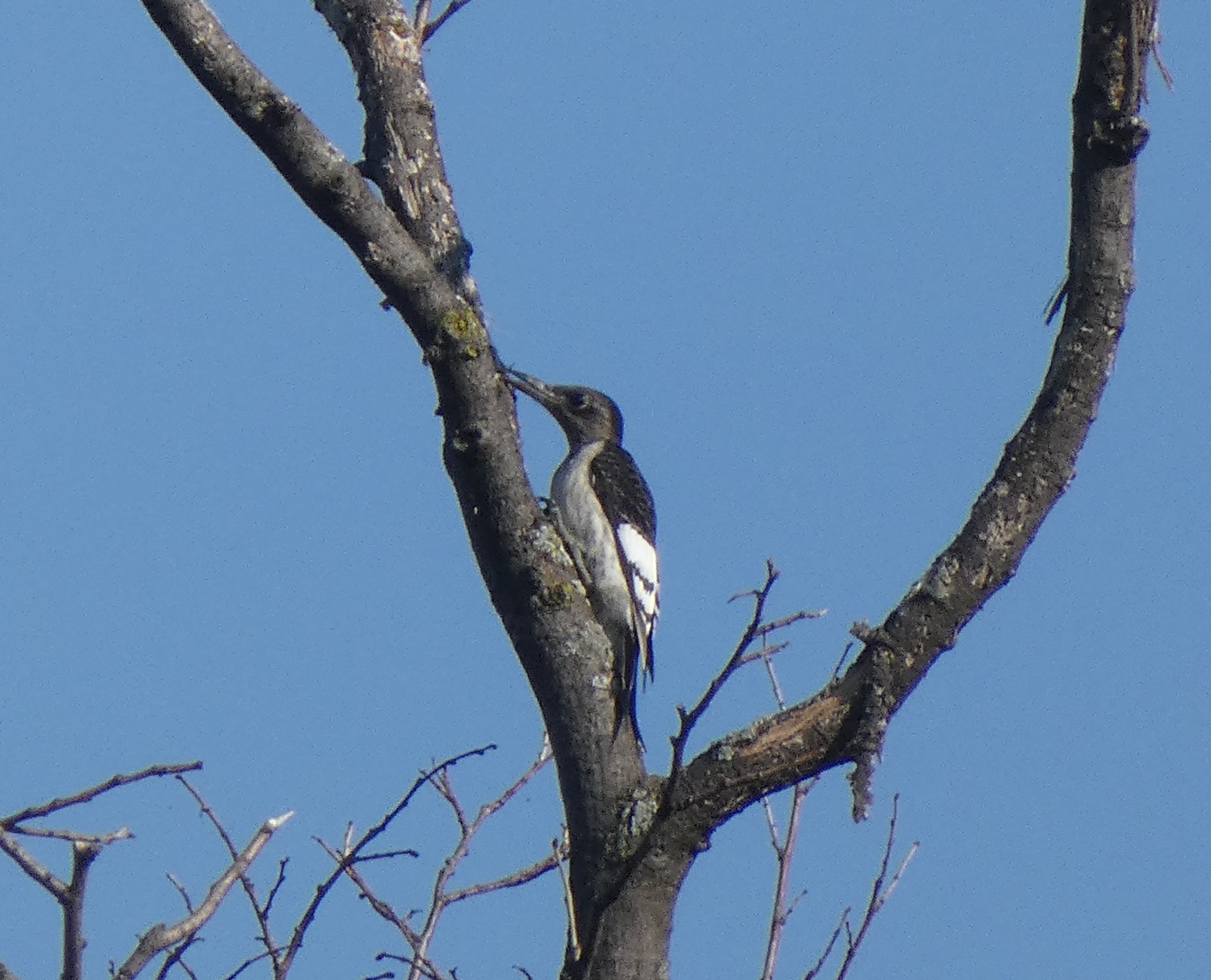Field Trip Report: Humboldt Park
Photo by Stephanie Beilke.
words by David Hoyt
September 30, 2023
One of my goals as a Chicago birder is to hit Humboldt Park at high points of each season to really get a feel for how things change over the course of a year in a city park. This was my first visit since earlier in the spring, and the first thing I noticed was how much the park had filled with native plant life. The next thing I noticed was how many people were using the park at 7:30 in the morning, many of them walking dogs. In an urban environment, there are a lot of living things sharing that space!
We were happy to have a few new birders join us at the Fieldhouse, where we each shared a bird that we hoped to see that morning: a male Northern Cardinal, a Green Heron, a Rose-breasted Grosbeak, a Gray-cheeked Thrush, and many wishes for warblers of any variety. With the exception of the Rose-breasted Grosbeak and Gray-cheeked Thrush, a good number of wishes were fulfilled.
Gray Catbird. Photo by Lauren Segal.
After a quick scan for shorebirds of Humboldt Park Beach by guide Chris Holden, we were off into the brush. The first of several American Kestrels was sighted, or maybe the first sighting of one of two or three American Kestrels that followed us around, from the top of a ballfield lamp post to an old snag down by the Prairie River. Given the strong morning light at a low angle, this was a good time to practice identification by silhouette: Is that a Northern Flicker, a robin, or a starling perched on the branch of that snag on the island? How can we tell by looking at the shape of the bill, the size of the body, or the length of the tail?
In contrast to my visit earlier in the spring, the marsh and pond edge areas were lush but relatively quiet, absent the lively chatter of Red-winged Blackbirds. But for those with good ears, fall announced itself with the calls of the season’s first Dark-eyed Juncos, and a handful of sparrows, both White-throated and White-crowned. One of our guides, Stephanie Beilke, reported the calls of Northern Cardinal chicks begging for a morning meal, an indication that, for our resident birds, there is still time to get another brood out.
Wending our way around Humboldt Park Lagoon, a Great Blue Heron and a Green Heron were spotted from across the water, and a Northern Waterthrush was heard along the bank. Mallards were out in force, and the Wood Ducks were not shy.
Cooper’s Hawk. Photo by Lin Johnston.
After chatting with an enthusiastic student birding group from the Pritzker School, we continued down to the Natural Area along the Prairie River, where most of our warblers were spotted. With its spacious understory of fruit-bearing trees and gentle elevations offering a view of the park, we regained sight of the American Kestrels, caught a dramatic Cooper’s Hawk flyover, all while chasing a Magnolia Warbler and a few Blackpoll Warblers (so I am told) among the Hawthorns.
Red-headed Woodpecker. Photo by Alicia Obando.
The surprise of the day, for this birder at least, was a Red-headed Woodpecker spotted high on a snag across the waterway. This species is considered a “level one bird of concern” by the Bird Conservation Network, meaning it has experienced steep population declines in the region, although it has recently shown a moderate rebound in numbers. We know what these birds need—tall, dead trees—and that’s where we saw this one—in the middle of Chicago!
Still savoring that taste of urban conservation success, the group concluded the latest chapter in the unfolding saga of COS Humboldt Park bird walks with 43 species.




